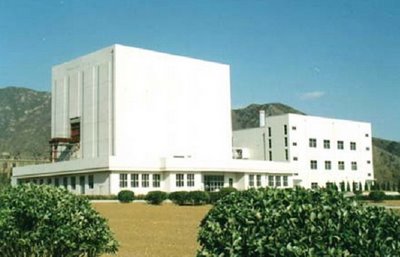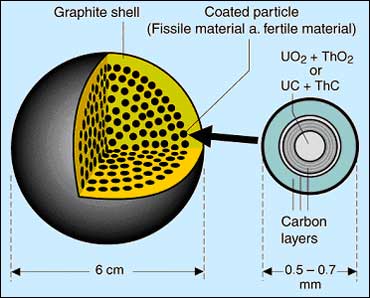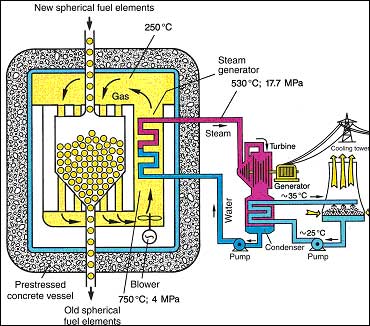|
* The pebble bed reactor (PBR) is an advanced type of nuclear reactor
* It was first developed in Germany
* China has the only operating pebble bed reactor
* One is currently being built in South Africa.
* One can produce enough energy to sustain 30,000 average sized homes.
* Ten modules can be controlled by one control center.

* The fuel for the Pebble Bed Reactor are 60mm, 210 gram (9 grams of uranium fuel) spheres made up of 15,000 particles.
* Each particle contains 4 layers. First a layer of porous carbon, then a layer of pyroltic carbon, next a layer of
silicon-carbide and finally another layer of pyrolytic carbon.
* The layers act as insulators to contain radioactive decay particles from the fuel core.
* The 15,000 particles are mixed with graphite powder and shaped into spheres. Then the sphere is covered in a layer
of pure carbon, heated and hardened.

* A Pebble Bed Reactor contains a reactor core made of steel, the walls are lined with graphite bricks, to control heat
transfer. The core holds 440,000 pebbles, 330,000 are fuel pebbles the remainder are graphite.
* The graphite pebbles are located in the center of the core and the outside, which limits the maximum temperature
the core can reach.
* Helium is pumped in to the top of the core at 500 °C. It travels through until it reaches the bottom at which point
it has been heated to 900 °C.
* The helium then travels through three turbines. Two turbines drive compressors, that compress and cool helium before
it is pumped back into the core and the third is used to drive an electrical generator, which produces power .
* After the helium is cooled, compressed and heated, it is pumped back into the core.

|
|
|

